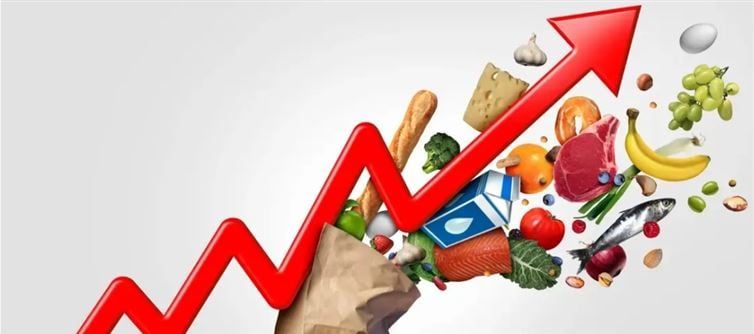
💣 “Inflation Is at 1.54% — But My Wallet’s at Zero” — The Great indian Gaslight of 2025 💣
India’s headline screams it loud: “Inflation Falls to an 8-Year Low of 1.54% in September.”
But when you step outside your door — fill your tank, buy vegetables, book a flight, or pay rent — you’re hit by a different kind of inflation: the one that never made it to the spreadsheets.
On paper, India’s economy looks calm.
In reality, it’s bleeding the middle class dry.
This isn’t an inflation drop — it’s a data illusion, a statistical sleight of hand crafted to make policy look perfect while your grocery bag gets lighter by the week.
Every indian knows the story.
You walk into a supermarket, and ₹5,000 gets you half a basket. You glance at your rent, your child’s school fees, your fuel bill — and you start to wonder if the government and your grocer live in parallel universes.
According to the latest data, India’s inflation just hit an 8-year low.
But according to your wallet, reality hit rock bottom.
So what’s going on? How can official inflation be low while everything feels expensive? Let’s rip the curtain and expose the difference between statistical inflation and survival inflation.
💥 THE GREAT indian INFLATION PARADOX — 8 TRUTHS THEY DON’T PUT IN press RELEASES
🧾 1. The Only Thing That’s Low Is Your Expectations
The government says inflation is at 1.54%. Congratulations — you just survived the cheapest illusion in economic history.
The number doesn’t reflect your rent, your commute, or your hospital bill. It reflects a narrow basket of goods, some of which you haven’t bought in years.
⛽ 2. ₹110/Litre petrol, But ‘Inflation Is Under Control’
Apparently, the economists forgot to drive.
Every litre of petrol you buy is a tax-fuelled paradox, and yet, energy prices are conveniently underweighted in the inflation index. The cost of fuel quietly multiplies across everything — delivery, travel, groceries — but in the data? It’s just a decimal point.
🏠 3. Rents Exploded. The Index Looked Away.
Your landlord doubled the rent, but inflation stayed zen. Why? Because housing costs in India’s cpi are grossly underrepresented. The formula assumes you’re paying 2005-level rent — and living in a time capsule.
🍅 4. Vegetables Are Gold-Plated, fruits Are Luxury
Tomatoes at ₹100/kg, onions at ₹80, fruits that feel like jewelry — and yet food inflation is “tamed.”
That’s because “seasonal adjustments” smoothen out the spikes on paper. In real life, they smooth your bank account instead.
✈️ 5. ₹10,000 Flights, ₹2,000 Meals — Welcome to ‘Low Inflation’ Tourism
Try planning a family trip. The airfare alone feels like ransom. A single night in a hill station costs ₹10,000. Even a roadside thali now flirts with ₹200.
But don’t worry — the data says you’re just “feeling” inflation.
🏥 6. Hospitals: Where Bills Inflate Faster Than Balloons
₹1 lakh for three dengue admissions — and that’s “low inflation” in healthcare terms.
Medical inflation in india has averaged 8–10% annually, but cpi barely reflects it because it underweights private healthcare costs, assuming you go to subsidized government hospitals that don’t exist for most citizens.
📚 7. Education: The Real Inflation Nobody Talks About
school fees doubled, coaching fees tripled, college tuitions skyrocketed — but the inflation data thinks you stopped studying after high school.
Education costs don’t just inflate — they compound, crushing middle-class families year after year.
💸 8. Inflation Is Down Because Demand Is Dead
Here’s the cruel truth: inflation falls not when life gets cheaper — but when people stop buying.
Reduced consumption, weak rural demand, and an exhausted middle class can make inflation “look low.”
That’s not progress. That’s economic exhaustion dressed as stability.
⚔️ THE BRUTAL TRUTH
Inflation is a number; your pain isn’t.
When a nation’s “success” is measured by data divorced from ground reality, what you get isn’t growth — it’s gaslighting by spreadsheet.
💬 FINAL TAKE:
India’s inflation may be at 1.54%,
but every indian knows what it feels like: 1154%.
The graph may fall, but your standard of living has already hit bottom.
Because inflation is low —
only for those who calculate it, not for those who live it.




 click and follow Indiaherald WhatsApp channel
click and follow Indiaherald WhatsApp channel